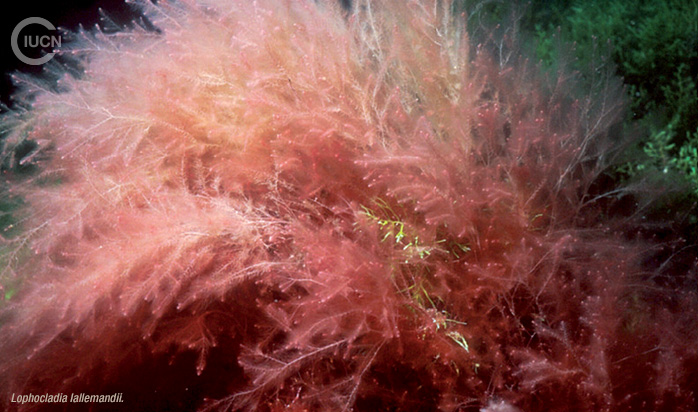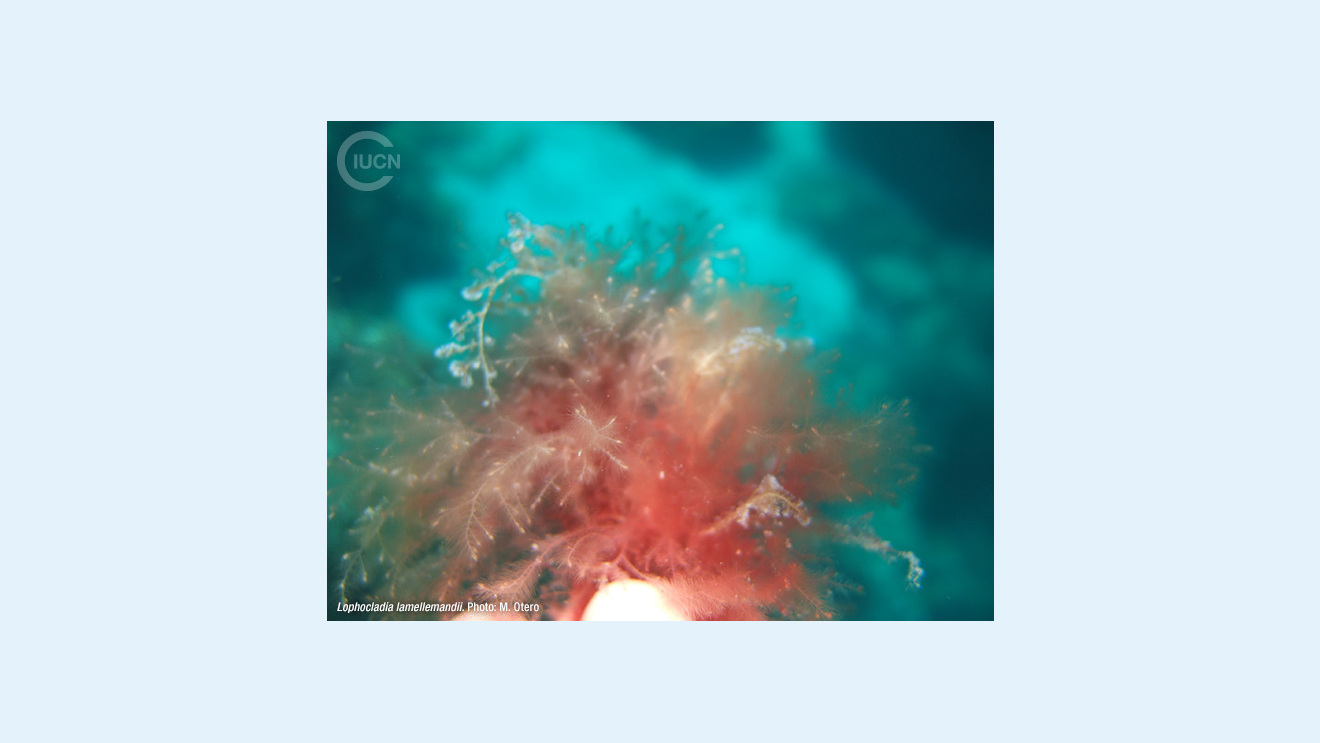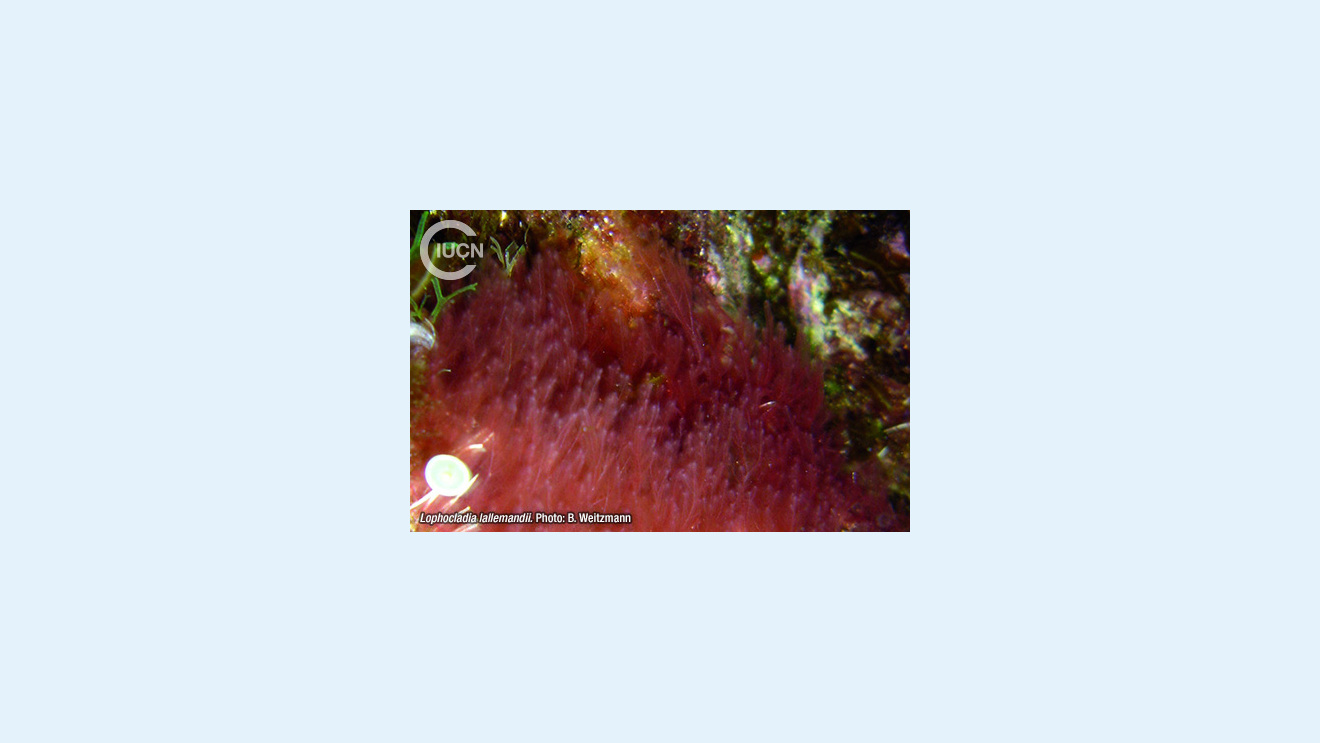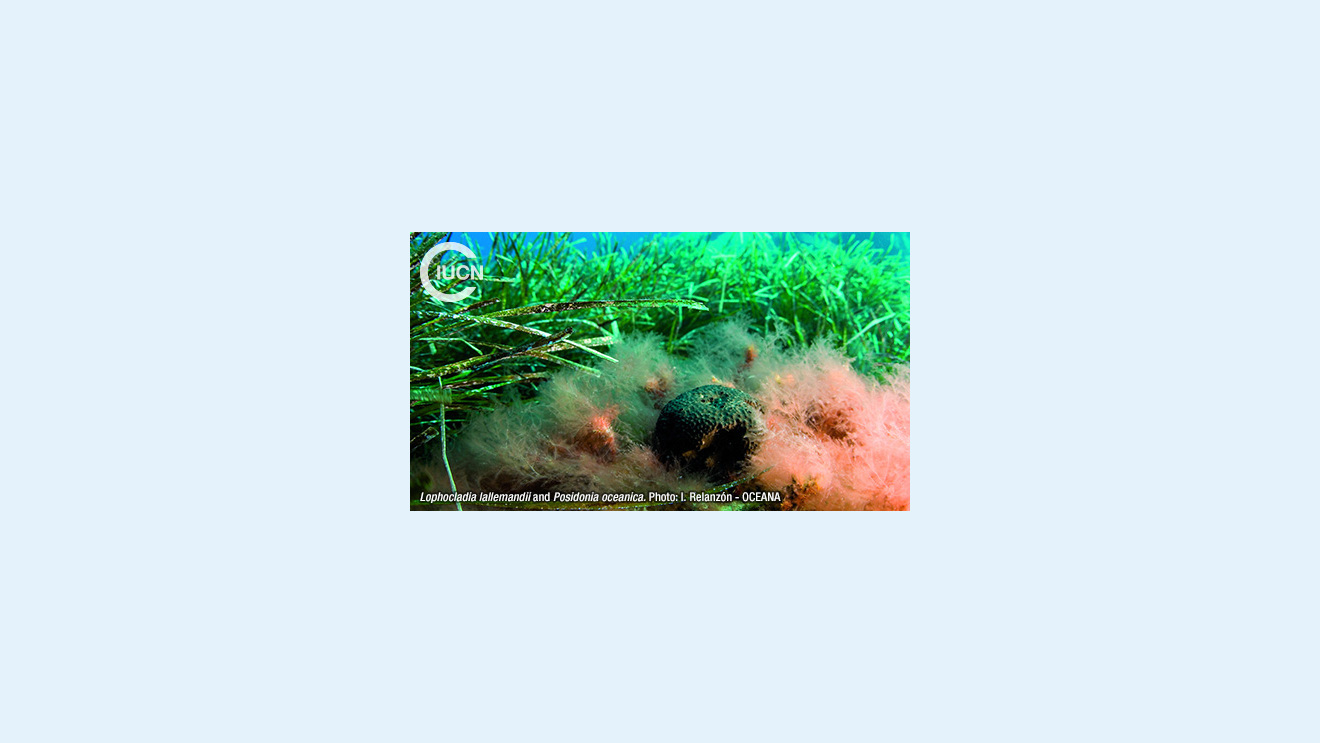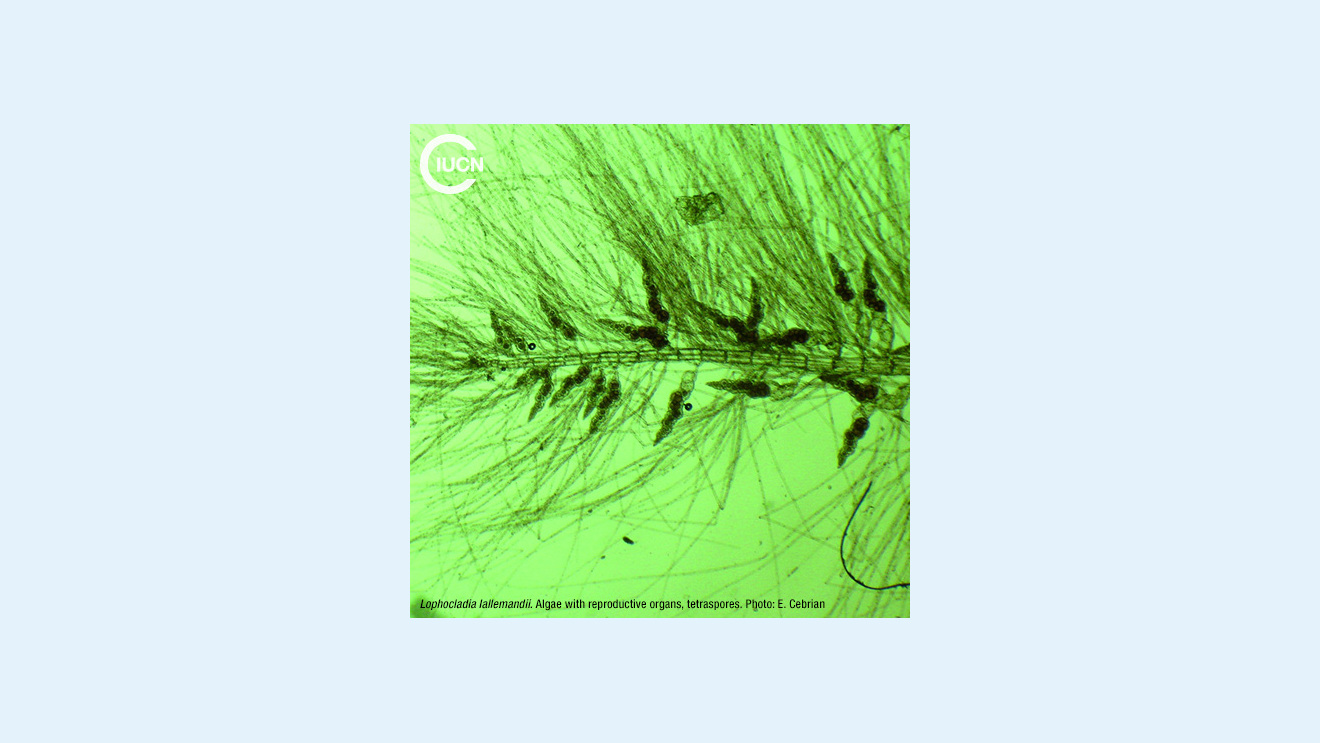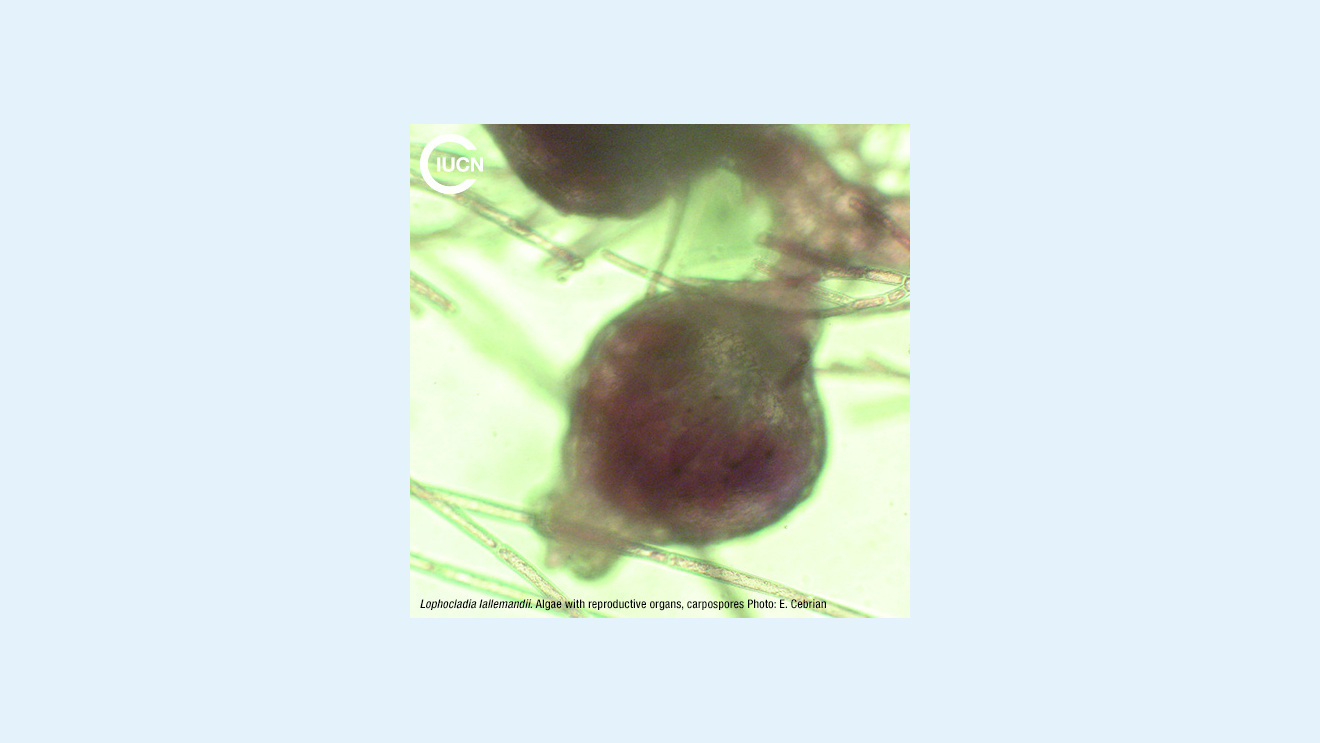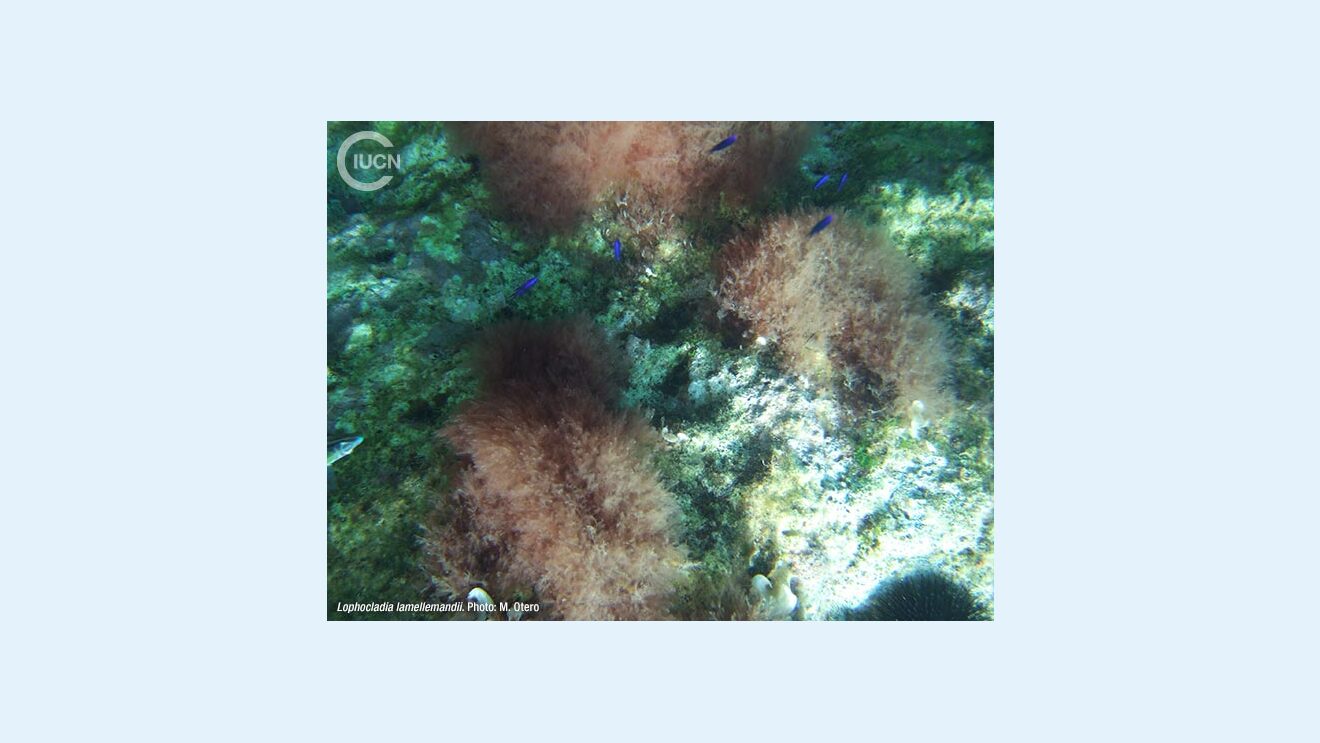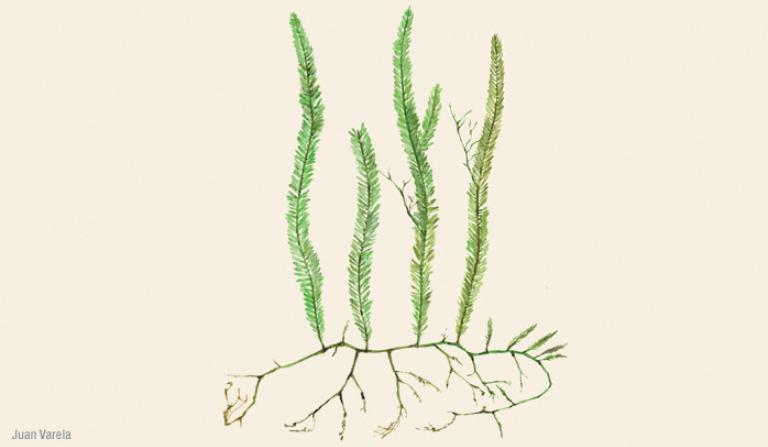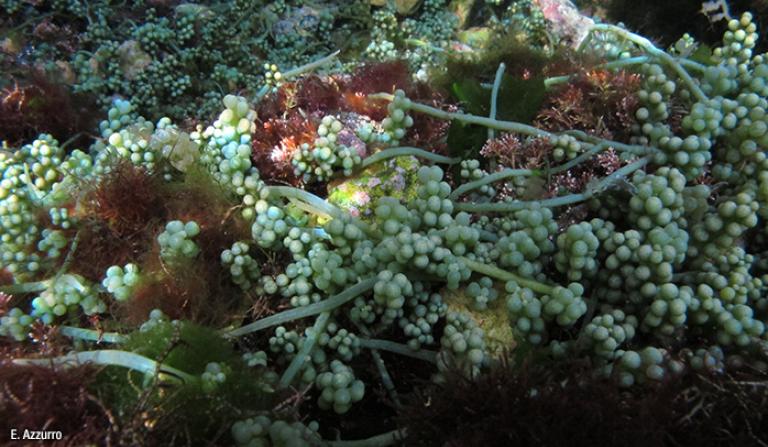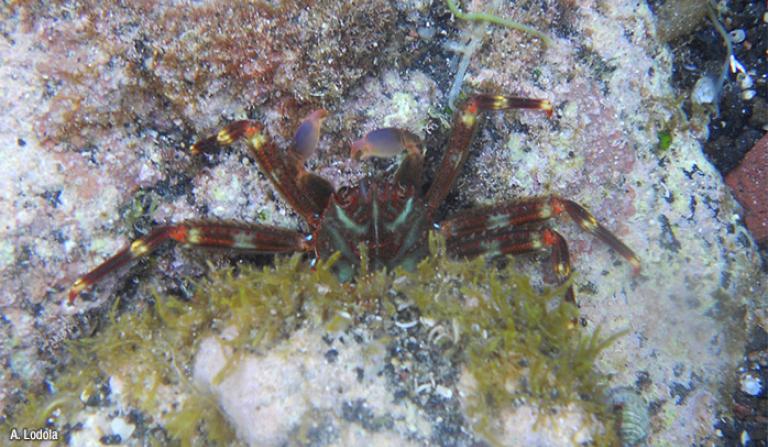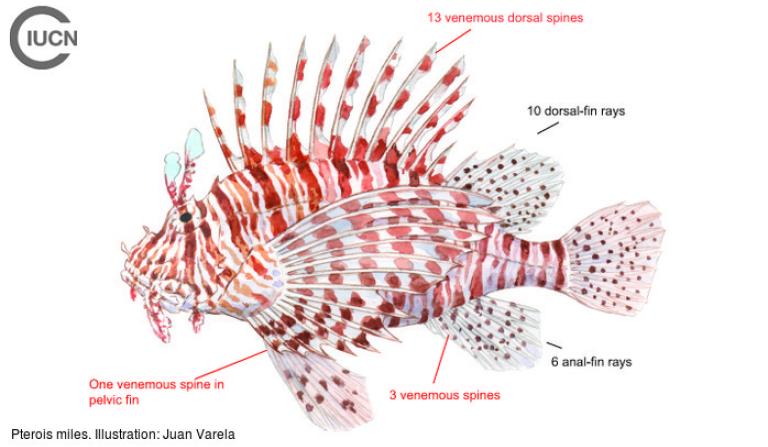Lophocladia lallemandii
Information
It settles on all types of substrate (bare bedrock, macroalgae on rocky bottoms, Posidonia oceanica seagrass meadows and coralligenous communities).
This alga displays pronounced seasonal production, with maximum development in summer and autumn (when most individuals bear reproductive structures) and a drastic decline in winter.
L. lallemandii is able to reproduce sexually and asexually, and both forms have the same appearance. It reproduces sexually only during summer and autumn (from April to October), while its vegetative reproductive activity occurs throughout the year, with minimal growth during late autumn and winter. Moreover, besides reproducing vegetatively through spore dispersal, it can spread by fragmentation: Lophocladia is easily broken and free-floating filaments produce small, disc-like holdfasts that are able to attach to a large variety of floating substrates.
The species can easily be confused in the field with other red filamentous algal species.
Lophocladia lallemandii is one of the numerous macroalgal species introduced into the Mediterranean probably from the Red Sea via the Suez Canal. It has now spread throughout most of the Mediterranean, with the exception of Moroccan waters and the north-western Mediterranean.
Due to its high invasive potential, L. lallemandii is able to cover most kinds of substrate, giving the benthic seascape a homogeneous appearance. The behaviour of L. lallemandii seems to be very aggressive, especially when colonizing Posidonia oceanica meadows, as it forms such extensive, dense mats within the meadows that it causes a major decrease in seagrass density and growth that can lead to the death of the plants. It also affects the invertebrate community living on P. oceanica leaves by outcompeting it for space.
Unknown.
Ballesteros, E., Cebrian, E., Alcoverro, T., 2007. Mortality of shoots of Posidonia oceanica following meadow invasion by the red alga Lophocladia lallemandii. Bot. Mar. 50, 8–13.
Cebrian E, Ballesteros E., 2010. Invasion of Mediterranean benthic assemblages by red alga Lophocladia lallemandii (Montagne) F. Schmitz: depth-related temporal variability in biomass and phenology. Aquat Bot. 92, 81–85.
Deudero S., et al, 2010. Interaction between the invasive macroalga Lophocladia lallemandii and the bryozoan Reteporella grimaldii at seagrass meadows: density and physiological responses. Biological invasions Vol. 12, No 1, 41-52.
